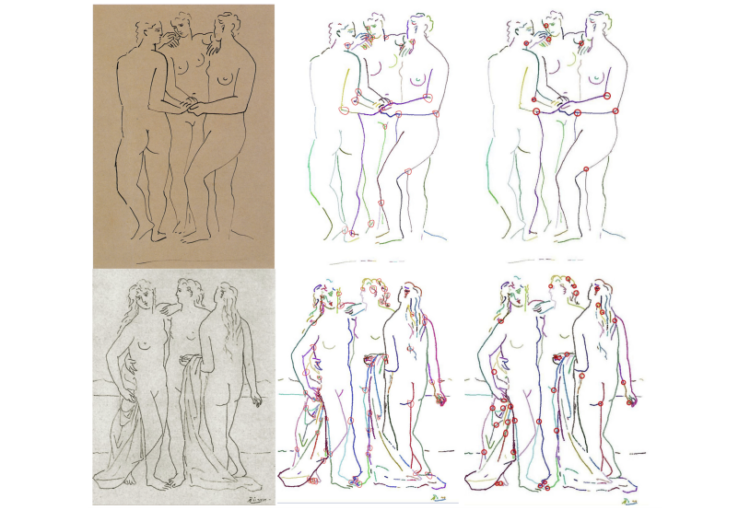Artificial Intelligence can spot fake Art in a single brushstroke
Counterfeiting artwork is a highly profitable business. One talented art forger can earn millions of dollars by convincing the art world that the painting is real. However, scandals can shake the art market when it turns out that collectors have fallen for deceptively good imitations and have spent vast sums of money on forgeries. Experts estimate that around 50% of the art traded on the market are counterfeit. But this could change soon – since researchers at Rutgers University are currently introducing a computational approach for the analysis of strokes in line drawings that can determine original work beyond doubt and spot a fake just by looking at the strokes used to compose a piece.

Source: https://arxiv.org/pdf/1711.03536.pdf
Identifying fake art is a difficult undertaking. Experts analyse pigments and binders, determine the age of wood and textiles by using the radiocarbon method and infrared reflectography, X-rays to prevent counterfeiters from using glue. Since the actual artists cultivate an inimitable style, scientists at the Rutgers University are using image recognition methods to track down most of the counterfeiters. In the meanwhile, Artificial Intelligence art recognition has reached an almost 100% hit rate with individual artists. Through Machine Learning, it is possible to draw the strokes of famous artists such as Pablo Picasso, Amedeo Modigliani, Egon Schiele, Henry Matisse and many others.
Machine Learning was trained on specific features, the difference between it and the RNN can point to the characteristics the neural network was looking at to detect forgeries.
In this case, 300 line drawings of famous artists were shown, and scientists only had to give the information of which pictures belong to whom. These drawings were then divided into 80,000 single strokes, and the algorithm learned the style of each artist. Later, art recognition was able to assign almost all of the unknown work to the right artists. In the case of forgeries, the hit rate was 100%. As good as the counterfeiters can deceive the human eye, the image recognition learned to distinguish the fakes from the originals by the very own stroke of the artists.
This experiment shows that the proposed methodology can classify individual strokes with accuracy 70%-90%, and aggregate over drawings with an accuracy above 80%, while being robust to be deceived by fakes with accuracy 100% for detecting counterfeits in most settings.
Up to now, only drawings with ink and pencil, woodcuts and etchings are part of the repertoire of art recognition. However, this will change in the future. Artificial Intelligence will even be able to expose counterfeiters who display new work as original in the style of old masters. All that is needed is to learn to recognise artists not only by strokes.

Source: https://arxiv.org/pdf/1711.03536.pdf
Zurück